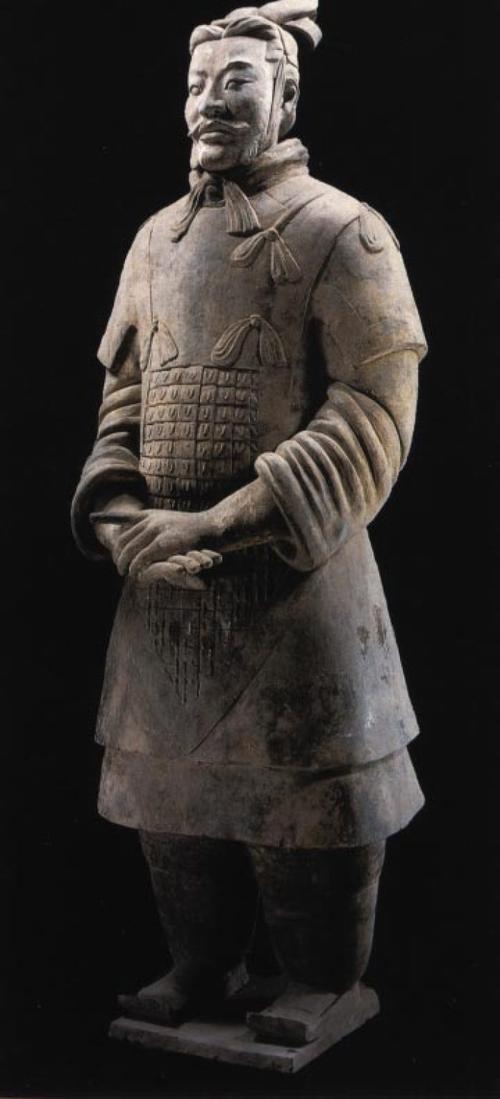
Who Was the First Emperor of China to Be Buried with Terracotta Army?
Qin Shi Huang and the Terracotta Army
Qin Shi Huang (d. 210 B.C.), the first unifier of China, is famously buried in a vast mausoleum complex guarded by the awe-inspiring Terracotta Army. This incredible archaeological site offers a glimpse into the opulence and military might of the Qin dynasty.
The First Emperor's Vision
Born Ying Zheng, Qin Shi Huang ascended the throne of the Qin state at the tender age of 13. A ruthless and ambitious ruler, he conquered the six warring states of China by 221 B.C., unifying the nation for the first time in its history. He declared himself "Qin Shi Huangdi," meaning "First Emperor of Qin," signifying his unprecedented status and ambition to establish an empire that would endure for generations.
Qin Shi Huang's vision extended beyond his mortal life. He was obsessed with immortality and sought to replicate his earthly power in the afterlife. The construction of his mausoleum complex began almost immediately upon his ascension to the throne and continued throughout his reign.
A City for the Afterlife
Located near modern-day Xi'an, the mausoleum complex is a microcosm of Qin Shi Huang's empire, covering an area of over 50 square kilometers (20 square miles). The complex comprises a central burial mound where the Emperor's tomb lies, surrounded by inner and outer cities.
The Terracotta Army, one of the most significant archaeological discoveries of the 20th century, is housed in pits located east of the burial mound. These life-sized terracotta figures, each with unique features and weaponry, were meticulously crafted to serve as the Emperor's eternal guard in the afterlife.
Other pits within the complex contain terracotta chariots and horses, reflecting the Emperor's military prowess and love for horses. The intricately designed chariots and lifelike horses further emphasize the grandeur and attention to detail that characterized the construction of the mausoleum complex.
The Significance of the Terracotta Army
The Terracotta Army's discovery in 1974 by local farmers digging a well was a pivotal moment in archaeological history. The sheer scale and artistry of the figures captivated the world, providing invaluable insights into the military organization, weaponry, and artistic traditions of the Qin dynasty. The Terracotta Army offers a unique window into the past, showcasing the remarkable craftsmanship and cultural achievements of ancient China.
Q&A
1. Why did Qin Shi Huang build such an elaborate mausoleum complex?
Qin Shi Huang's mausoleum complex, with its vast scale and intricate details, reflects his obsession with immortality and his desire to rule even in the afterlife. The complex was designed to be a microcosm of his earthly empire, providing him with all the comforts and power he enjoyed in life.
2. What is the significance of the Terracotta Army's unique features?
The Terracotta Army's uniqueness lies in the individual features of each figure. Every soldier has a distinct facial expression, hairstyle, and armor, reflecting their rank and role within the army. This attention to detail highlights the advanced craftsmanship of the Qin dynasty and offers valuable insights into the military hierarchy of the time.
3. Why is Qin Shi Huang considered the first Emperor of China?
Qin Shi Huang was the first ruler to unify the warring states of China, ending centuries of conflict. He declared himself "First Emperor," signifying his unprecedented achievement and his ambition to establish a long-lasting dynasty. His unification of China, implementation of standardized weights and measures, and construction of large-scale infrastructure projects laid the foundation for a unified Chinese empire that has endured for millennia.